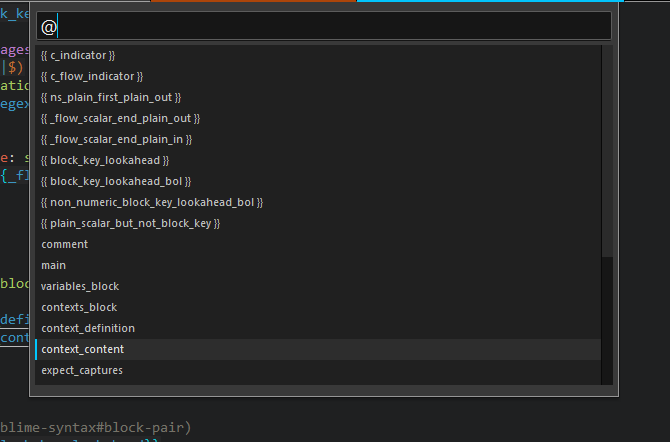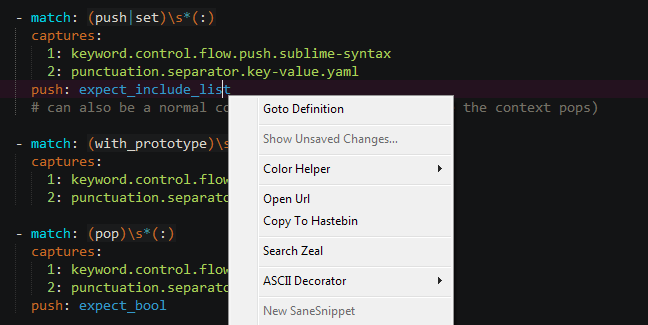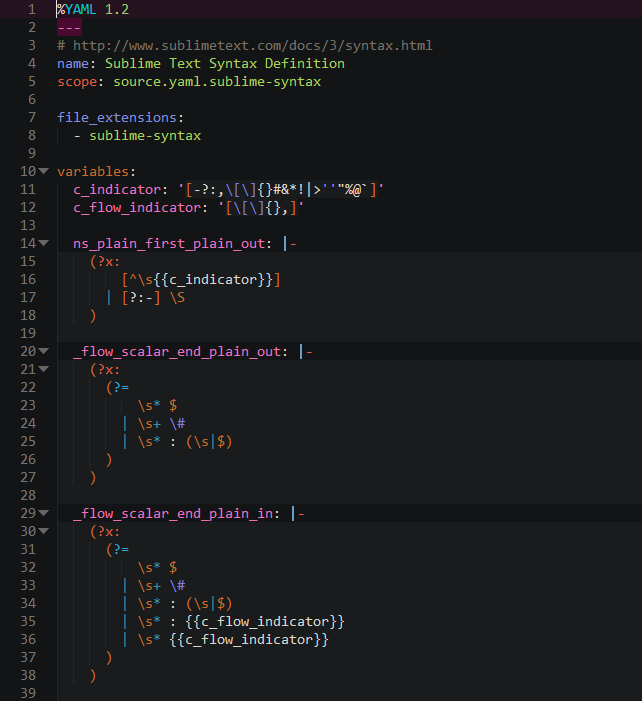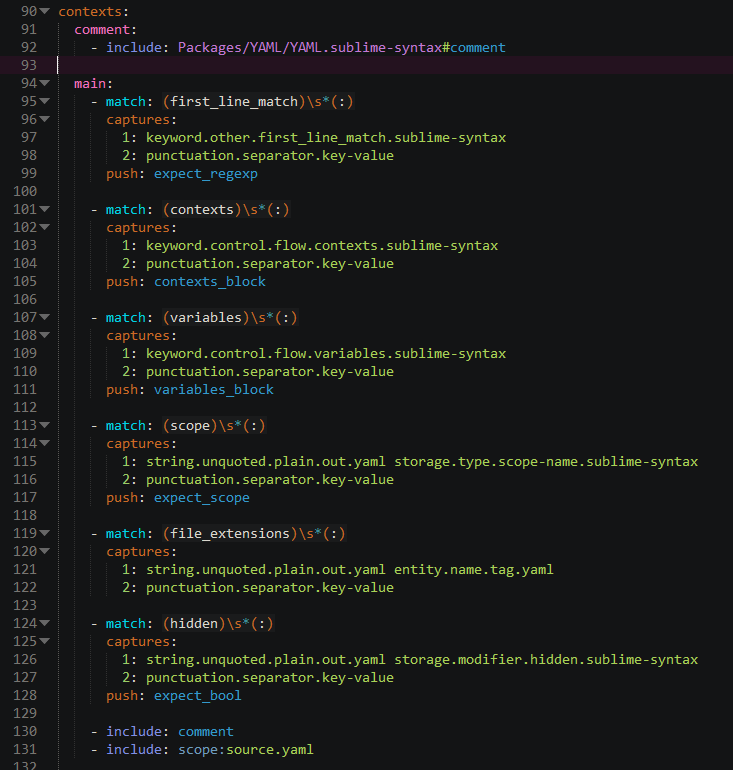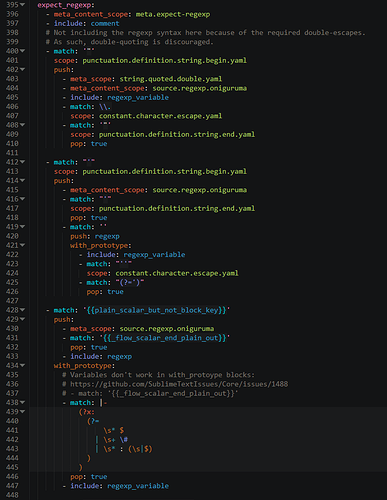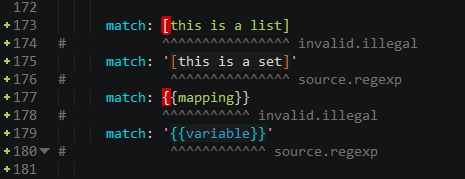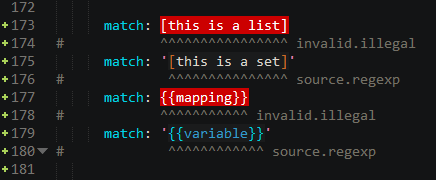Hello there,
in a recent push to finally have some sane syntax highlighting for .sublime-syntax files, I did all the required work and pushed it as a pre-release to the PackageDev package. Before releasing this to the public (I want to re-write all the other syntaxes, since they are severely lacking), I’d like to collect some feedback regarding this quite complex syntax definition.
To enable installation of pre-releases, open “Preferences: Package Control - User” via the command palette and add this:
"install_prereleases": ["PackageDev"],
What I’m particularly interested in:
- Does
(?x)extended mode highlighting work as you would expect it to? - Do you see/use empty in your multi-line regular expressions and does the syntax definition handle this correctly?
- Do you have a color scheme that highlights
source source(like mine) and are you annoyed by some empty lines being highlighted as a result? (see first example screenshot)
Here’s a preview of the features:
